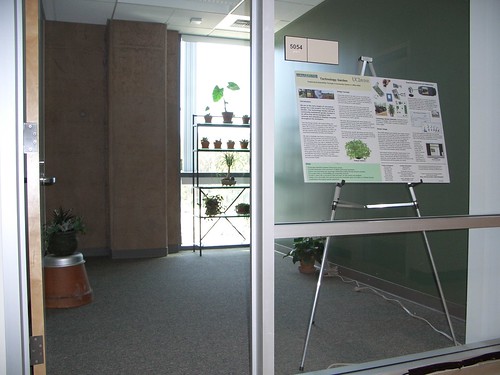

I saw an interesting sensor technology in an artwork that creates a connection between a bird and a plant--and also human onlookers. "Essay Concerning Human Understanding" was a live, bi-directional, interactive, telematic, interspecies sonic installation Eduardo Kac created with Ikuo Nakamura between. In this work, a canary dialogues over a regular phone line with a plant (Philodendron) 600 miles away.
In New York, an electrode was placed on the plant's leaf to sense its microvoltage fluctuation response to the singing of the bird. The of the plant was monitored through a Macintosh running a software called Interactive Brain-Wave Analyzer (IBVA). IBVA is a program designed to detect human mental activity and was employed to inspect the vital activity of an organism generally understood as devoid of consciousness. The information coming from the plant was fed into another Macintosh running MAX, which controlled a MIDI sequencer.
The yellow canary was given a very large and comfortable cylindrical white cage, on top of which circuit-boards, a speaker, and a microphone were located. A clear Plexiglas disc separated the canary from this equipment, which was wired to the phone system. Not surprisingly, people altered their behavior when around the bird and around the plant.
Kac says about this work: "This interactive installation is as much about creating art for non-humans as it is about human isolation and loneliness, and about the very possibility of communication. As this piece projects the complexities of electronically mediated human communication over non-human organisms, it surprisingly reveals aspects of our own communicative experience. This interaction is as dynamic and unpredictable as a human dialogue." [Thanks to www.ekac.org]
Now I'm trying to figure out if IBVA is something that could be useful for the Technology Garden. I found IBVA's website and still have no clue as to what it is or what it does and how it does it. Sadly, they have a terrible FAQ that is long rant against the evils of greedy marketing and press people. While I sympathize, they really ought to help out their consumers a little here.
I've also found a patent for a device that does something similar. Alas, I have found no actual product.




